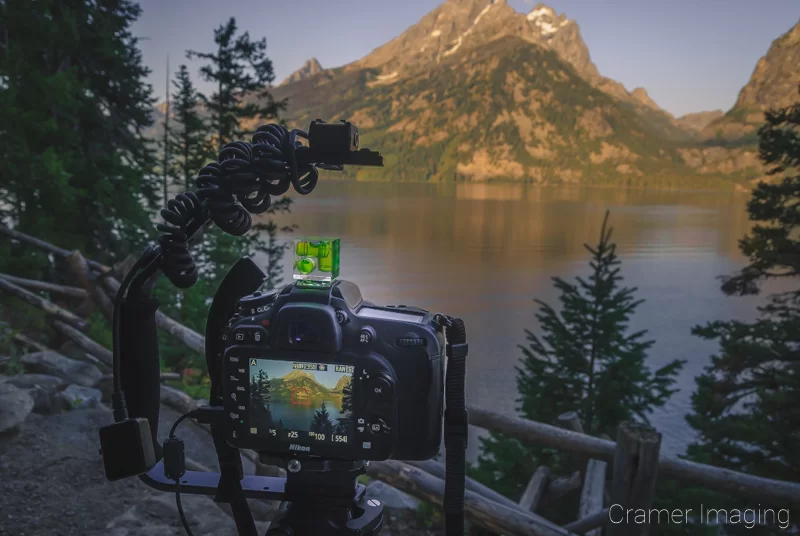When I decided I wanted to start taking a serious look into photography as a hobby, I eagerly shopped online for a high-end consumer grade digital camera with SLR capabilities. After it arrived in the mail, I couldn’t wait to go on a shoot with it. I wanted to see the amazing work I anticipated would flow from my camera like a river near the ocean. However, I was in for a serious shock when I looked at my first photos from my new expensive DSLR camera. I was dismayed by my initial photos. When subsequent attempts yielded the same results, I became discouraged.

It took me a while to realize that the reason I was so disappointed. It was because I fell victim to one of the classic blunders of aspiring photographers. That blunder was assuming that all I needed was a fancy new camera and I could shoot pictures as amazing as professional photographers.
The Beginning
Once you decide that photography is for you, shopping for your first “expensive” camera can be downright fun or it can be seriously intimidating. There are lots of terms which you may or may not understand in the features list of all the consumer grade and the professional grade cameras. You may choose to research out exactly what those terms mean, or you could choose to just get the best-looking camera in your price range with as many accessories as someone will bundle in for you. Neither method is necessarily a bad move. I made the later choice myself.

The Problem
It is at this point where most people fall victim to the common misconception that purchasing a fancy and expensive camera is all they need. Maybe there will be a lens or two on the acquisition list as well. The energy after making such a huge purchase is high and so is the level of photo generation. The crash and crushing disappointment comes when those pictures are reviewed at home not using the tiny preview screen of the camera.

Those initial photos are nothing special at all, or worse, they turned out far more terrible than anything out of a simple point-and-shoot camera. The pictures might not be sharp and are certainly not worth writing home about nor posting on the internet. You are left with some very difficult questions to answer: “What happened? Why did this happen to me? Did I buy the wrong camera and/or lens? Is there another piece of magical camera gear to buy which would fix this?”

The answers to this string of questions may not be something that the novice photographer wants to hear. No there is not a magical piece of equipment which can fix this for you now nor in the future. No, you probably did not purchase the wrong equipment. The reason that this happened is simply because you assumed that all you needed was the look and the equipment in order to shoot high quality photographs. Nothing is further from the truth. There is more which you need it the form of education and practice.

It is a sad fact that nothing we want comes easy. Nothing worth having comes free. There is effort required, and serious amateur or professional quality photography is no exception. I learned this the hard way as have many before me. My first DSLR photos, and yours, look the way they do because equipment is not the answer to scoring the kind of quality photographs you and I were hoping for. If it was the answer, then everyone could and would be taking that level of photos and there would be no need for professional photographers at all.
The Solution
If you haven’t given up on photography, and you probably haven’t if you’re reading this article, then it’s time to start your photography education. The first thing that you must do is read your owner’s manual and to learn your equipment inside and out. You need to know what all those fancy buttons and controllers do. With that knowledge, you can properly control your camera out in the field. This may take a while. However, you’ll learn faster and better by field practice for more internalized lessons.

The second thing to do is to learn basic rules of photography composition. Plenty of websites out there will teach you about the rule of thirds, simplicity, the golden mean, and other compositional techniques. Without these lessons and practice with them, your photography will continue to disappoint you. You’ll learn photo composition by experience. Only practice with your camera will help you to develop the eye you’ll need for epic or professional level work.

You’ll need both patience and practice as the amazing photos you desire will be few and far between at first. The more photos you take, the more regularly you will find your photography quality increase. I have gone on many a shoot where the photos I took did not meet my current standards. However, a few months ago, such pictures would have dazzled me that I took. As you continue to grow in your photography skill, your photos will come to meet the quality level you started out dreaming about with greater and greater frequency.
Conclusion
If photography is your dream and your passion, then you will, of course, want to purchase the best camera gear and accessories you can. Just remember to temper your expectations of what your first photos will look like. If you can expect that you have much to learn about your new toy, you won’t experience the heartache of disappointing first photographs. Nor will you feel you wasted your investment money. Photography may be something you will not give up on yet. The rewards of your patience, learning, and practice will be slow but much greater than you imagined. We look forward to seeing your work.



